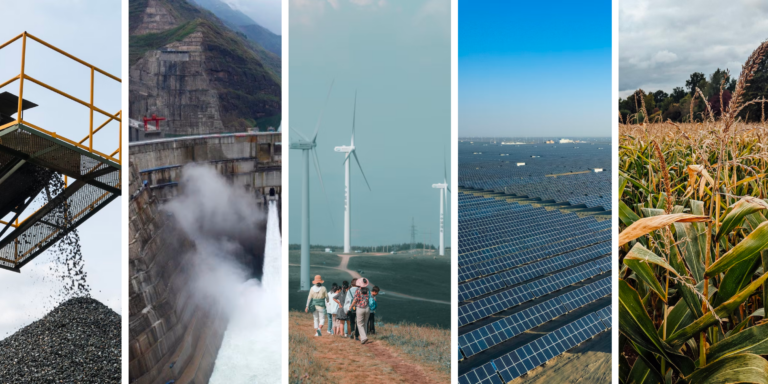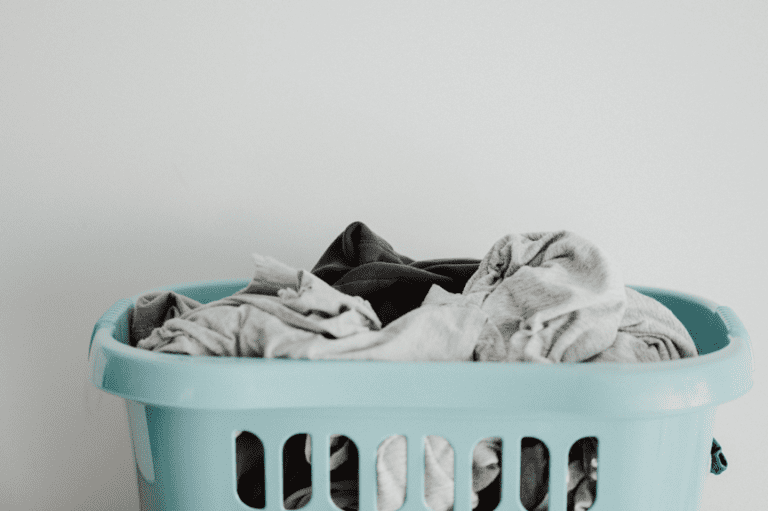Forests are vital in maintaining Earth’s health, acting as a key buffer against climate change, a habitat for diverse species, and a source of livelihood for millions of people. However, the alarming decline in global tree cover is a significant concern. Between 2001 and 2023, the world lost an estimated 488 million hectares (Mha) of forest, representing a 12% decrease in tree cover since the start of the millennium. This loss has far-reaching consequences for biodiversity, carbon sequestration, and ecological stability. Even China, which has spearheaded the largest reforestation effort globally, has seen a 7.4% decrease in tree cover during this period, underscoring the scale of the challenge for China’s reforestation efforts.
Why is China conducting reforestation efforts?
The first reason would be for environmental restoration. Over the past few decades, China has faced significant environmental challenges, including deforestation, desertification, and air and water pollution. Reforestation is seen as a way to restore ecosystems, combat soil erosion, and improve air and water quality. For example, in regions like the Kubuqi Desert, reforestation efforts have been aimed at combating desertification and reducing the occurrence of sandstorms.
China’s reforestation efforts are also aligned with the country’s commitment to achieving carbon neutrality by 2060, contributing to global efforts to reduce carbon emissions and combat climate change. Reforestation efforts also help biodiversity conservation by providing habitats for wildlife and generating economic benefits for local communities through sustainable forestry practices, eco-tourism, and the production of timber and non-timber forest products.
The Green chronology: milestones of China’s reforestation journey
China has been combating deforestation and promoting large-scale reforestation efforts for decades. Here is the timeline of some of the key initiatives:
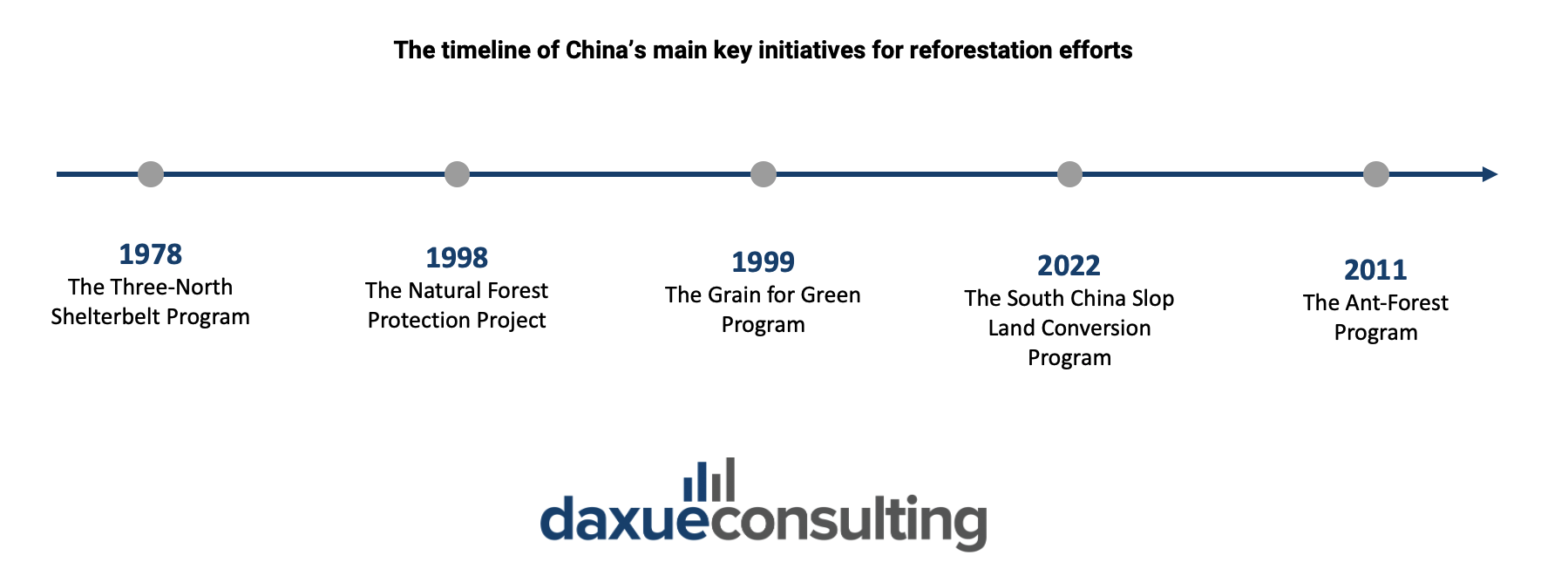
The Three-North Shelterbelt Program (1978)
The Three-North Shelterbelt Program is a large-scale effort designed to enhance environmental conditions and augment forestation in China’s northern regions. Spanning 13 provinces, autonomous regions, or municipalities, totaling 4.069 million km2, the program aims to substantially boost tree coverage over the long haul. Its primary objectives include soil stabilization, sandstorm prevention, and enhancing ecological conditions in China’s arid and semi-arid zones.
The Natural Forest Protection Project (1998)
Implemented in 1998, this project recognized the vital role of natural forests in maintaining ecological balance and biodiversity. It aimed to halt commercial logging in these valuable ecosystems to prevent deforestation and habitat loss. To compensate for lost income from logging, the project offered subsidies to farmers and local communities. Additionally, funds were allocated for forest conservation efforts, such as habitat restoration and wildlife protection, to ensure the long-term sustainability of natural forests.
The Grain for Green Program (1999)
Launched in the late 1990s, this program introduced economic incentives for farmers to convert marginal agricultural lands into forests. Farmers received subsidies for planting trees and maintaining the newly established forests, thereby addressing soil erosion and land degradation. By transitioning from agricultural to forestry activities, the program aimed to improve ecological conditions, enhance biodiversity, and promote sustainable land management practices.
The South China Slopes Land Conversion Program (2002)
Implemented in the early 2000s, this program focused on addressing soil erosion on steep slopes in southern China. It encouraged the conversion of these vulnerable landscapes back to forests and grasslands. By restoring vegetation cover on steep slopes, the program aimed to reduce the risk of landslides, improve water retention, and enhance ecosystem resilience. Additionally, the program promoted sustainable land management practices to ensure the long-term conservation of natural resources and ecological stability in southern China.
The Ant-Forest Program (2011)
The Ant Forest program, developed by Ant Financial, the financial arm of Alibaba Group, and the United Nations Environment Programme (UNEP), is a mobile app integrated with Alipay. Users earn “green energy points” through eco-friendly actions like walking instead of driving. As points accumulate, virtual trees are planted in the app, and when a threshold is reached, real trees are planted in China’s degraded areas. Users can track progress, compete, and share achievements, making environmental conservation accessible and rewarding.
The greening giant: Analyzing China’s forest growth and regional variations
Between 2001 and 2021, China experienced significant forest expansion, leading all other countries by adding approximately 425,000 square kilometers to its forested areas, which represents a 24% increase. The extent of China’s forest growth exceeded the combined total of the next 19 countries. The United States, Russia, India, and Vietnam also saw notable increases in forest areas, with Vietnam and Uzbekistan each recording around 23% and 24% growth in forest coverage, respectively.

Continuing the effort, China is planning to plant 36,000 square kilometers of new forest annually between 2021 and 2025. This is a significant area, exceeding the size of Belgium. The goal is to raise China’s forest coverage rate to 24.1% by the end of 2025, up from 23.04% in 2020. This large-scale tree-planting effort is part of China’s plan to achieve carbon neutrality by 2060.
Green diversity: China’s afforestation and its regional dynamics
China’s efforts in afforestation and land greening reveal significant regional disparities in forest coverage, as influenced by various geographical factors.
In the prosperous southeast, provinces like Guangdong and Zhejiang stand out for their high forest coverage, which is closely linked to their economic prosperity and environmental preservation initiatives. Conversely, provinces such as Shandong, Jiangsu, and Henan exhibit lower forest coverage due to their primary role as China’s main grain-producing regions, necessitating substantial land allocation for agricultural purposes.
Geographical factors further contribute to these disparities. Provinces with the highest forest cover are typically located in the South of the Yangtze River and the Northeast. The southern regions benefit from mountainous terrain and abundant rainfall, fostering optimal conditions for forest growth. Meanwhile, the northeast boasts a sparse population and ample water resources, facilitating favorable conditions for forest development.
These regional variations underscore the complex interplay between economic activities, environmental considerations, and geographical features in shaping China’s forest landscape. Understanding these factors is crucial for effective land management and sustainable development strategies nationwide.
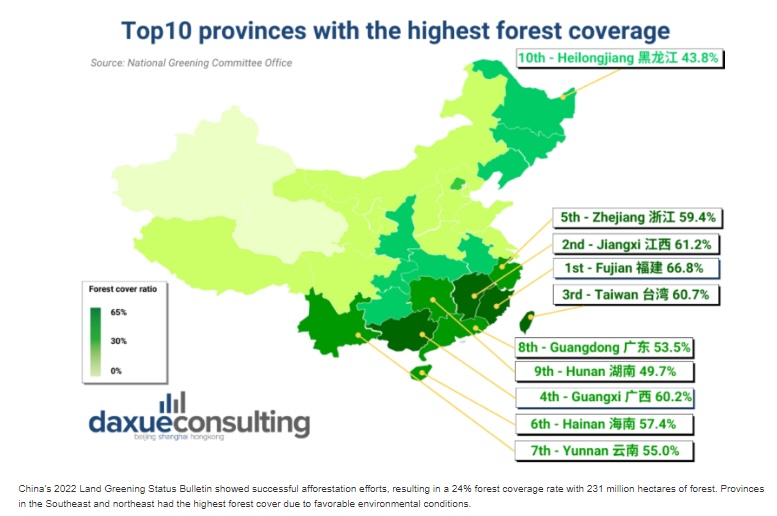
How do China’s reforestation efforts shape business landscapes?
Increasing forest coverage could substantially enhance eco-tourism in China by providing richer biodiversity and more scenic landscapes, which attract more visitors and encourage sustainable tourism practices. Yet, China’s reforestation efforts can also impact other businesses and industries, both positively and negatively.
China’s reforestation efforts positively influence several industries by aligning them with sustainable practices. Renewable energy gains traction as reforestation underscores the need for cleaner alternatives to fossil fuels, providing impetus for investments and advancements in solar, wind, and hydropower sectors. The cultivation and harvest of non-timber forest products (NTFP) become more viable as forests expand, diversifying income sources for local communities through products like berries, mushrooms, and latex. Also, the green technology and innovation industry receives a significant push as sustainable forest management necessitates new tools and processes, from enhanced seedling cultivation to improved monitoring systems.
On the flip side, China’s reforestation drive has put certain sectors under pressure. The timber products industry, such as the wooden furniture industry, faces a direct impact as reforestation often involves restrictions on logging, leading to a reduced supply of timber and increased regulation of the industry. Land development projects are encountering greater environmental scrutiny and often have to yield to reforestation priorities, which can lead to delays and increased costs for developers. Lastly, the expansion of agriculture, a traditionally dominant force in land-use dynamics, is being curtailed as arable land becomes forested to meet reforestation goals. This may lead to short-term economic strain on farmers and a need for agricultural innovation to maintain productivity on reduced land.
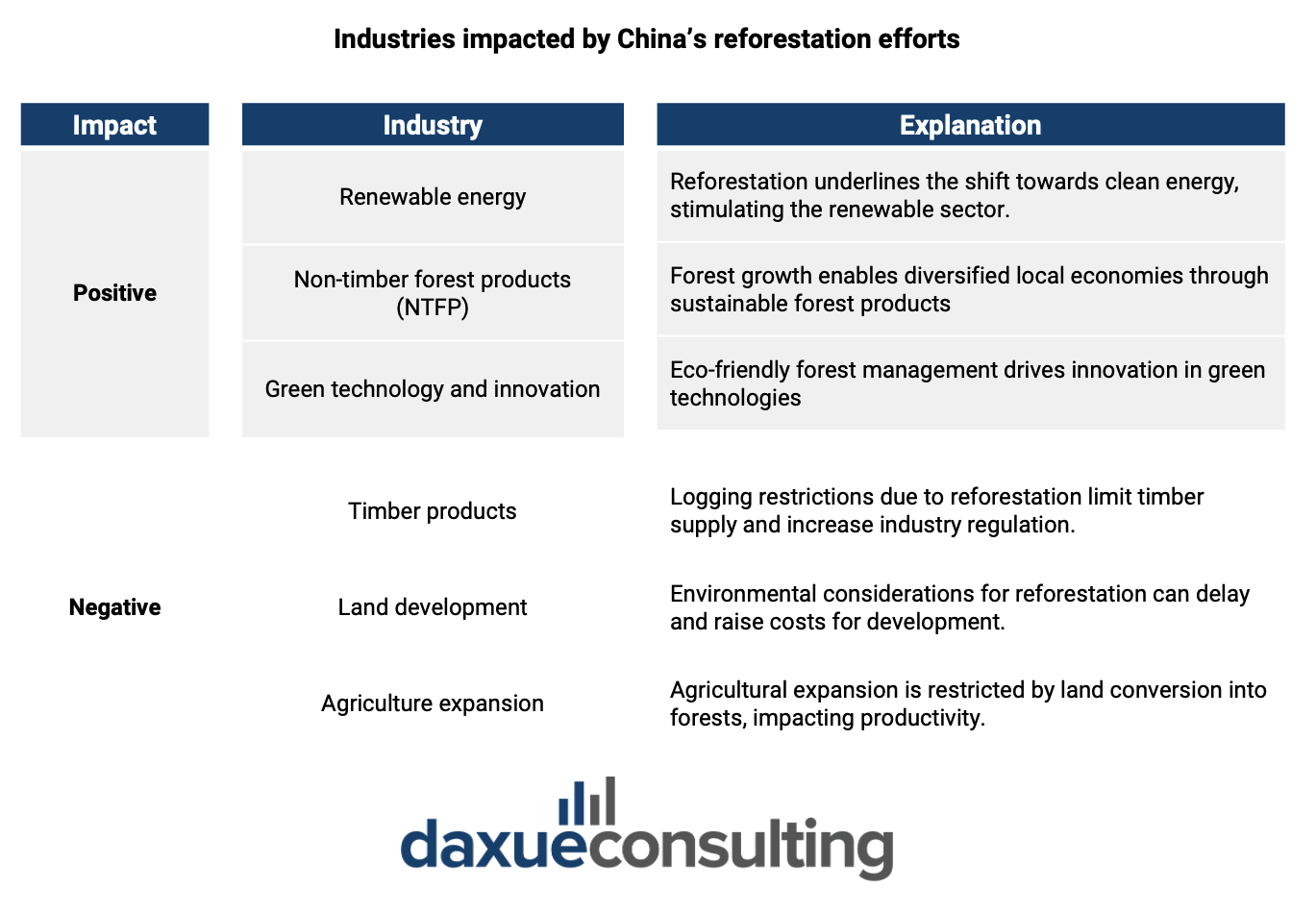
China’s reforestation efforts are sparking an array of initiatives that businesses can capitalize on, including developing eco-friendly products and services to meet the increasing consumer demand for sustainability. This environmental push provides an avenue for companies, particularly those dealing in organic foods, renewable technologies, and biodegradable materials, to strengthen their connection to green efforts, thus enhancing their attractiveness to customers who prioritize eco-friendly consumption.
Planting progress: a detailed look into China’s reforestation efforts
- China’s reforestation aims to address environmental challenges and contribute to carbon neutrality by 2060.
- Key initiatives include the Three-North Shelterbelt Program, the Natural Forest Protection Project, the Grain for Green Program, the South China Slopes Land Conversion Program, and the Ant-Forest Program.
- Forest expansion in China from 2001 to 2021 led the world, with significant gains despite a 7.4% decrease in the global tree cover from 2001 to 2023.
- Geographical factors create disparities in forest coverage across regions, with the highest forest cover in the South and Northeast, linked to various economic and environmental factors.
- Reforestation has positive impacts on industries such as renewable energy, non-timber forest products, and green technology, while it pressures the timber, land development, and agriculture sectors.
Daxue Consulting provides market insights for strategic decision-making
As China’s commitment to reforestation continues to progress, it is essential for businesses and organizations to stay informed on the evolving landscape of environmental initiatives and their impact on the market. At Daxue Consulting, we specialize in providing comprehensive market research and consumer insights on China’s reforestation efforts and their implications across various industries. Our expertise can help you navigate the complex relationship between reforestation policies and market dynamics, allowing you to make data-driven decisions and identify opportunities for growth. Contact us today to learn how we can support your business in understanding the changing environmental landscape in China.




